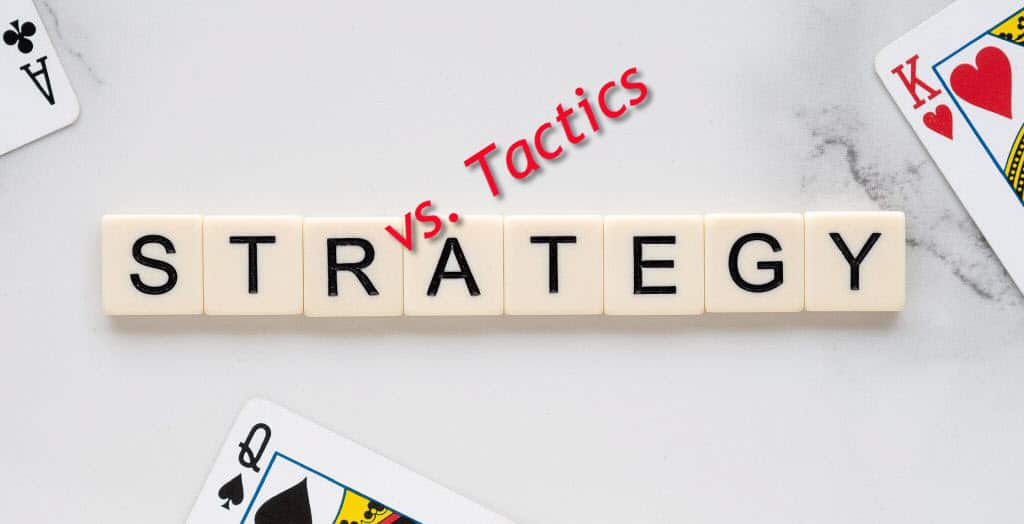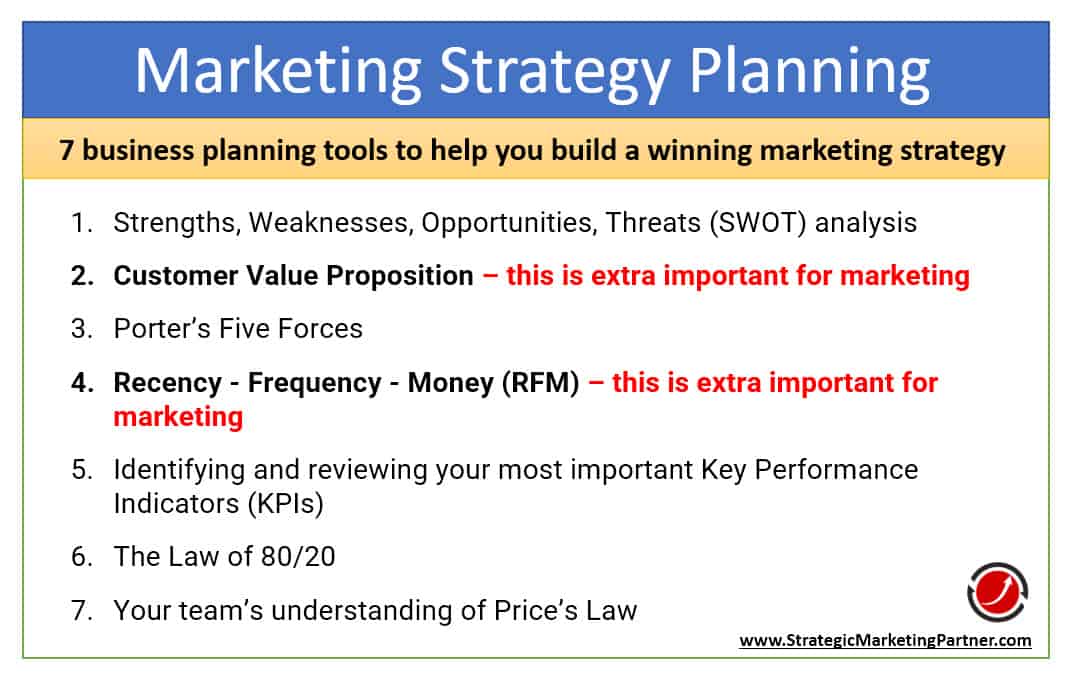The Important Role of Manufacturing in Economic Development (+gone wrong)
Manufacturing plays a crucial role in economic development. It’s what provides for the local economy, the culture, and the population […]
Read More »Become a successful marketing consultant: Learn more

Marketing is critical for building a connection between a business and the consumer.
Nothing else is more important in business.
After all, as you learned from our tutorial on “Why you need marketing in business”, marketing is one of the three functional areas of any business, standing tall next to: operations and administration.
While it is the company’s strategic planning that sets the big goals and vision for the business, the marketing plan is tasked with the important jobs of marketing strategy and marketing tactics.
Marketing strategy and tactics work together and are important procedures for any company:
While these two words may seem synonymous, they mean different things, and for many people, their difference is a bit of a blur. Let’s take a closer look at the difference between strategy and tactics and why you need both for productive marketing.
Unlike what you may think, marketing strategies and tactics are not the same, and you cannot use them interchangeably.
Misunderstanding the difference between these two could lead to your company struggling with marketing campaigns. Thereby spending too much resources, creating inefficiencies, and chasing goals that may not be in line with the strategic plan.
You might find yourself doing activities such as opening a Facebook page or creating a website, because other businesses are doing the same without taking time to analyze your company’s goals and aligning them with the needs of your customers.
Customers always come first. For more on this, visit our tutorial: What is the first rule of marketing (solved!).
How are marketing strategy and tactics different?
Marketing involves two core processes; strategy and tactics. Marketing strategy provides the high-level framework for the vision for the company and what separates your company in the marketplace. Marketing tactics include the action items that will gain and retain customers.

Marketing strategy is what defines your marketing approach, and it should answer the following questions;
Marketing strategy is the direction towards the marketing goals you want to accomplish. In simple terms, it is a conceptualization of how you could achieve the goals you have within your organization. It is the backbone of your marketing effort and should align with the long-term goals of your company.
An example of a long-term goal is expanding your audience, coming up with another brand or increasing the number of transactions per year made by your existing customers. Part of the strategic planning process, including marketing strategy, is:
This may seem like a lot to prepare your marketing strategy, but all these planning tools work together nicely.
Marketing tactics are the actions you need to take to support the strategy. Tactics are the actions you take to ensure the implementation of the target strategies.
If you operate like many companies who are frantically trying to get through their daily needs without a strategy, then the tactics being executed are virtually destined to fail. That’s because there is no strategy to guide the marketing actions. So when a highly trained advertising salesperson has their chance to make their well-rehearsed and practiced sales pitch, then anything sounds like it is needed.
But if your strategy is well developed and you have a clear map of where you are headed, and how much resources you have to get there, then it is much easier to make tactical marketing decisions.
Here’s some typical tactical marketing methods. And as you can immediately see, if you have a well developed strategy, then these marketing tactics can be developed in line with the marketing strategy helping you achieve the big goals;
Marketing strategy is a concept within your marketing plan, while marketing tactics are the action you take to make the strategy a reality.
As discussed above, strategy is the high-level plan you come up with, and tactics are actions you take based on the strategy of choice.
According to research, for your marketing to be productive and achieve the target goals, you need to take time and come up with a strategy, then do a tactical implementation.
Strategy comes first because it is an idea of how you would like things to run based on where you are today and where you want to end up.
The tactics come second to strategy because they are actions involved in implementing the strategies.
For example, if you operate a t-shirt business in a competitive environment where similar companies offer the same price and products, your marketing strategy and tactics need to be superior to the competition.
To set yourself apart from the other companies, you could have the following marketing plan;
To provide more options than the competition by offering additional branded items that pair well with t-shirts, such as cups, hoodies, and trousers.
A tactic in marketing is an action that you take to promote your services or products to execute specific marketing strategies. It is essential to know that tactics vary from one business to another and what may work for the neighboring business may not necessarily work for you.
It is wise to have clear objectives and craft your marketing strategy to support them. After this, you can decide on the right tactics to deliver that strategy.
Marketing strategy and tactics are totally different, yet closely related. If you want to do marketing and make a profit for the company, go through the points discussed above and understand the difference between a marketing strategy and tactics.
Ensure that you analyze your tactics often and continually focus on optimizing the process.